
Creative Expressive Activities
and Aspergers Syndrome
of related interest
Art as an Early Intervention Tool for Children with Autism
Nicole Martin
ISBN 978 1 84905 807 0
Art Therapy Exercises
Inspirational and Practical Ideas to Stimulate the Imagination
Liesl Silverstone
Foreword by Brian Thorne
ISBN 978 1 84310 695 1
The Expressive Arts Activity Book
A Resource for Professionals
Suzanne Darley and Wende Heath
Foreword by Gene D. Cohen MD PhD.
Illustrated by Mark Darley
ISBN 978 1 84310 861 0
Music Therapy, Sensory Integration and the Autistic Child
Dorita S. Berger
Foreword by Donna Williams
ISBN 978 1 84310 700 2
The Girl Who Spoke with Pictures
Autism Through Art
Eileen Miller
Foreword by Robert Nickel MD
Illustrated by Kim Miller
ISBN 978 184310 889 4
Creative Expressive Activities and Aspergers Syndrome
Social and Emotional Skills and Positive Life Goals for Adolescents and Young Adults
Judith Martinovich

Jessica Kingsley Publishers
London and Philadelphia
First published in 2006
by Jessica Kingsley Publishers
73 Collier Street
London N1 9BE, UK
and
400 Market Street, Suite 400
Philadelphia, PA 19106, USA
www.jkp.com
Copyright Judith Martinovich 2006
The right of Judith Martinovich to be identified as author of this work has been asserted by her in accordance with the Copyright, Designs and Patents Act 1988.
All rights reserved. No part of this publication may be reproduced in any material form (including photocopying or storing it in any medium by electronic means and whether or not transiently or incidentally to some other use of this publication) without the written permission of the copyright owner except in accordance with the provisions of the Copyright, Designs and Patents Act 1988 or under the terms of a licence issued by the Copyright Licensing Agency Ltd, Saffron House, 610 Kirby Street, London EC1N 8TS. Applications for the copyright owners written permission to reproduce any part of this publication should be addressed to the publisher. Warning: The doing of an unauthorised act in relation to a copyright work may result in both a civil claim for damages and criminal prosecution.
Pages marked with  may be photocopied for personal use without the need to request permission from the publisher.
may be photocopied for personal use without the need to request permission from the publisher.
Library of Congress Cataloging in Publication Data
Martinovich, Judith, 1955
Creative expressive activities and Aspergers syndrome : social and emotional skills and positive life goals for adolescents and young adults / Judith Martinovich.
p. cm.
Includes bibliographical references and index. ISBN-13: 978-1-84310-812-2 (pbk. : alk. paper)
ISBN-10: 1-84310-812-7 (pbk. : alk. paper) 1. Aspergers syndromePatients
Education. 2. Aspergers syndromeSocial aspects. 3. Creative ability. I. Title.
RJ506.A9M376 2005
618.92858832dc22
2005014168
British Library Cataloguing in Publication Data
A CIP catalogue record for this book is available from the British Library
ISBN 978 1 84310 812 2
eISBN 978 1 84642 237 9
Chris, Anna, Sam
With love
Acknowledgements
With appreciation to Warren and Joan Moore, my parents, whose support and encouragement of lifelong learning allowed this book to come together from many directions and experiences over a period of years; Tony Attwood for his diagnosis skills, the beginning; Eve Thalor and Jeanne Marron of West Bergen Center for Child and Youth for sharing their work with so many people, including myself; and the many children and adults with Aspergers Syndrome, for their purity of spirit.
Contents
List of figures
List of creative activities
Hellos and goodbyes
Preface
Young people with Aspergers Syndrome have concerns similar to their peers transitions, independence, decisions and relationships. Asperger traits are likely to be less obvious in adolescence than in childhood due to increasingly modified behavior. Yet the individual with Aspergers is likely to feel more isolated and be more susceptible to depression than his peers.
Support of the whole person is important. People with Aspergers Syndrome are wonderful individuals, each exceptional in their own way, typically with good hearts and integrity, sometimes eccentric but with unique skills and enormous potential to make their own lives and the lives of other people around them extraordinary.
Perhaps the greatest need for the adolescent is to make meaningful connections with other people, to feel they have something meaningful to offer and have skills to make positive choices about their future. Activities in this book are structured to address these and many other issues. Problematic AS traits are a reason to look for support but provide a weak, non-affirming core for support and/or a support group.
The most effective and engaging support is in opportunities for social interaction, genuine affirmation and exploration of the whole person, their individuality, potential, and strengths. These are the objectives and goals of activities in this book individualized therapy within a group context activities that address AS traits while affirming individual exploration and expression:
Adolescents and young people with Aspergers Syndrome have different needs to the child in grade school. They are developing a distinctive identity and this book takes a positive and broad approach to support and development of the whole person .Itisa wellness model , engaging individuals in their own development with a creative, visual, and experiential language suited to the Asperger way of thinking.
Creative activities and interventions are grounded in contemporary principles of Positive Psychology and Social and Emotional Learning principles for building long-term satisfaction, happiness, and psychological resilience.
There is a broad, comprehensive approach to Asperger traits including work with cognitive processing, personal development, and social synchrony; and introducing different therapies that can be applied to Aspergers Syndrome.
Activities are designed to adapt to different ages and skill levels; individual or group; school or psychological setting; available time and space; with or without Aspergers .
Creative activities are multidimensional . They complement and reinforce each other in support of the whole person. This book includes activities in art, music, dance, movement, drama, yoga and relaxation, and cognitive and behavioral skills.
If you work or live with Aspergers Syndrome and you have creative ideas that contribute to positive development, resilience, and strengths, we would love to hear from you. Please contact Judith Martinovich at
Part I
A Multidimensional Approach to Aspergers Syndrome
CHAPTER 1
Introduction
This book is ). AS traits can be used as strengths, not just perceived as weaknesses, and activities are introduced which apply or modify them accordingly. With knowledge and awareness, people with AS can do a great deal to turn a diagnosis around to work for them, not against them.
A multifaceted approach to Asperger support strategies
Individuals are multifaceted Aspergers Syndrome adds to the complexity with its pattern of traits, differing between individuals.
Comprehensive strategies for supporting positive development should have many dimensions.
Next page
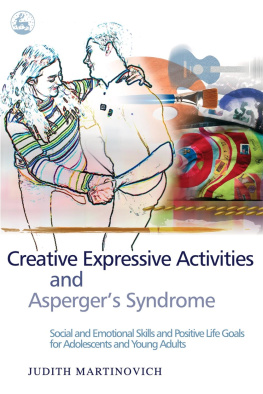
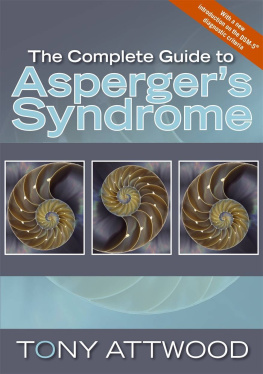
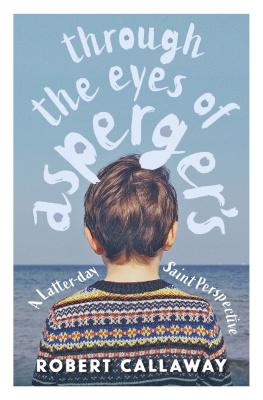
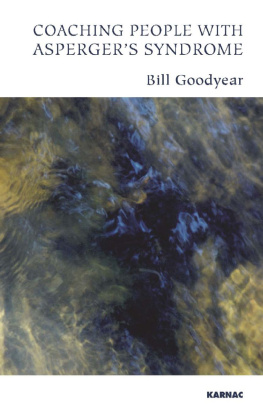

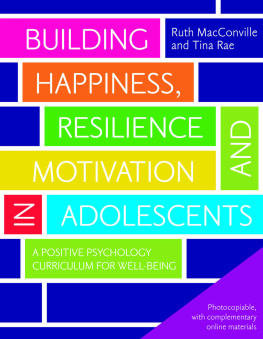
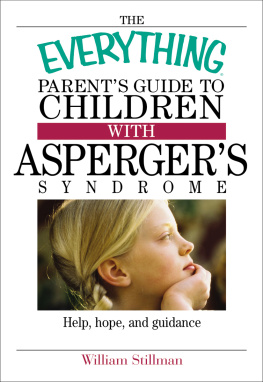
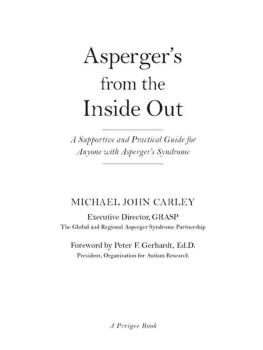

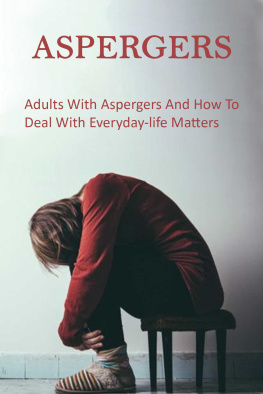
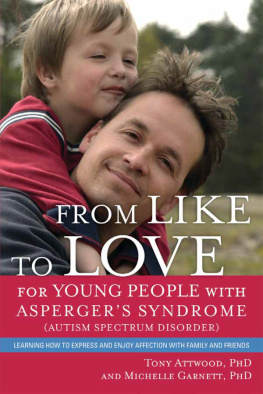

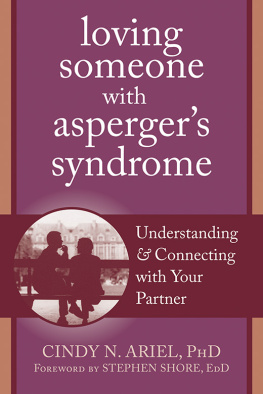


 may be photocopied for personal use without the need to request permission from the publisher.
may be photocopied for personal use without the need to request permission from the publisher.